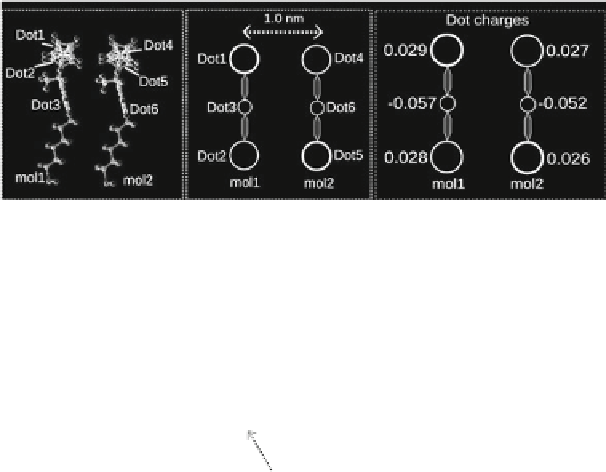Information Technology Reference
In-Depth Information
Fig. 27.
Charge distribution of two nearby bis-ferrocene molecules (complete QCA
cell).
Fig. 28.
Charge distribution of a bis-ferrocene molecules in presence of a polarized
driver.
(Fig.
28
(C)). Swapping the two point charges (that means switching the driver
logic state) the situation is dual. This means that the molecule interacts with
the driver, but the intrinsic properties of the neutral molecule already discussed
in the previous section affect also the driver-molecule interaction.
3.3
Effect of Clock on Molecule Switching
The next step of the analysis was the simulation of a clock signal in order to
evaluate the possibility to enhance or hinder the communication between nearby
molecules. In the case of bis-ferrocene molecule, the clock signal could be imple-
mented with an electric field applied along the vertical axis of the molecule. The
analysis was performed both on the neutral and the oxidized bis-ferrocene and
also in presence of a polarized driver. The molecule was simulated with all its
elements including the thiol, whose charge is considered as component of the
third dot charge.
In case of neutral molecule, the application of a negative clock field generates
a displacement of charges inside the molecule and in particular the working dots
become negatively charged, while the carbazole charge becomes positive. The
charge distribution of the clocked molecule is depicted in Fig.
29
(B). On the other
hand, the application of a positive clock signal leads to a dual configuration in
which the working dots have a positive charge, almost equal, while the carbazole
becomes negatively charged (Fig.
29
(C)). In this case, the charge distribution












Search WWH ::

Custom Search